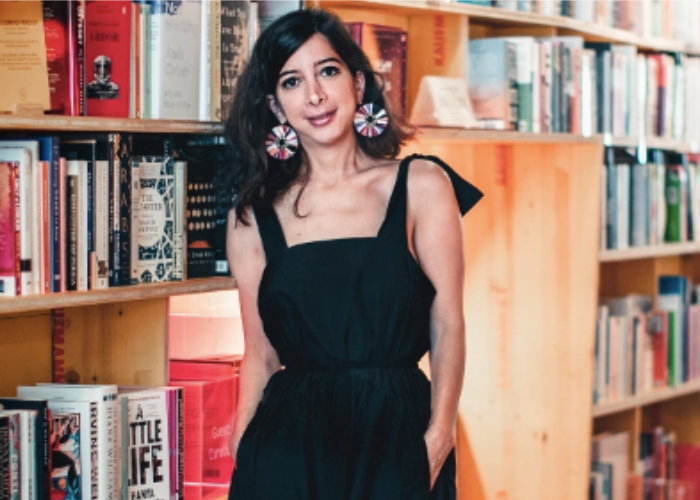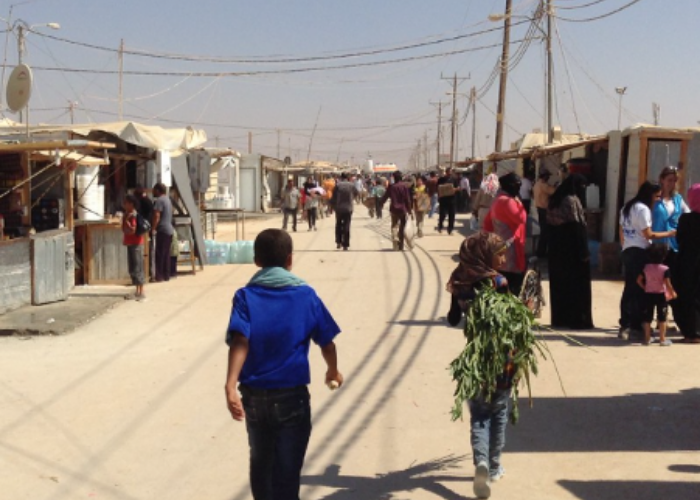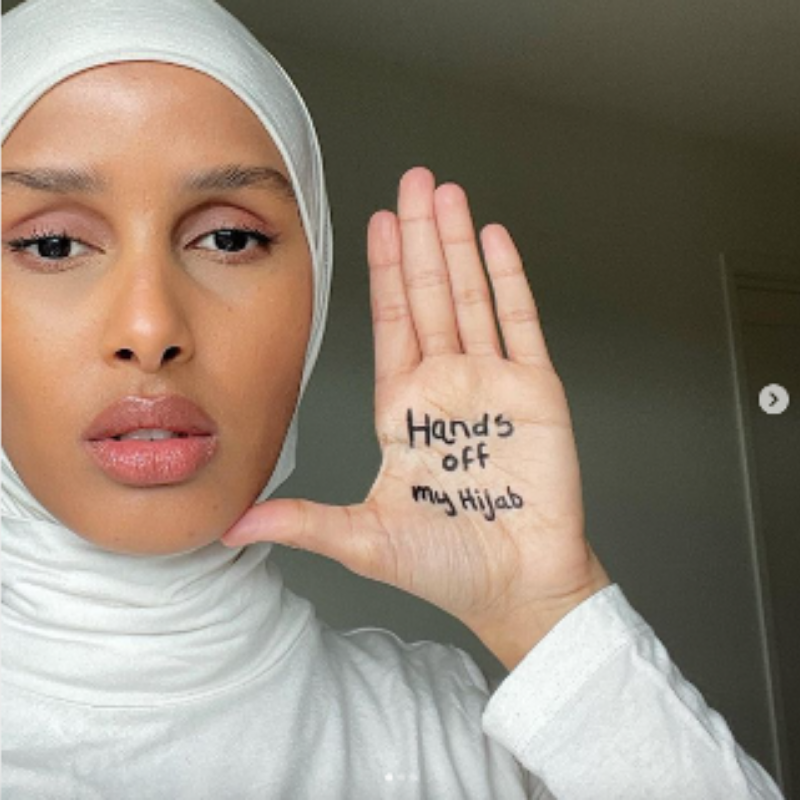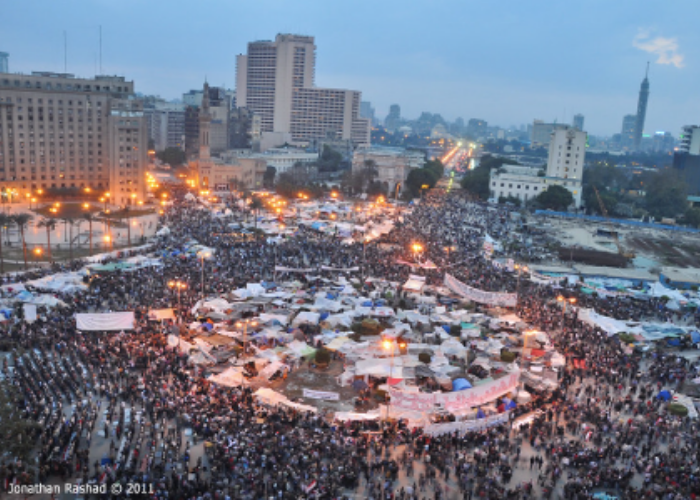Have you ever noticed that most of the journalists covering the Middle East and North Africa are… well… not from the Middle East and North Africa? Lebanese journalist, editor, and author Zahra Hankir noticed this too a few years back, when she created a Google doc called ‘Mideast Reporters’, only to find that most of the journalists reporting for international media were male and Western (p. xviii). This led her to edit Our Women on the Ground, a wonderful collection of nineteen essays written by women who cover their own homelands in the Middle East and North Africa.
Hankir ‘writes about the intersection of politics, culture and society in the Middle East’, and in her introduction to the book, she mentions how Arab women are often misunderstood. For example, a woman is sometimes mistaken for being Muslim because she is Arab (p. xiv). Social norms across the region are largely stereotyped which presents a narrow understanding of this part of the world and diminishes its cultural diversity. Hankir challenges this issue through what can clearly be seen as a careful and considered editing process.

Western journalists at the forefront
Historically, Western journalists have maintained their position at the forefront of reportage in the MENA region whilst Arab women have been forced into the background, despite their ‘access’ and ‘expertise’ (p. xiii). Our Women on the Ground includes sahafiyat (women journalists) whose ‘countries of origin include Lebanon, Syria, Egypt, Morocco, Yemen, Libya, Palestine, Sudan, and Iraq.’ In addition, their reportage ranges from the 1980s to the 2010s and they are of different faiths (p. xiv).
Consequently, through each essay we gain a deeper understanding of the region through the perspectives of women who have either grown up there or have lived in the West but maintain a familial and therefore intrinsic connection to the region. The essays are all focused on personal experiences and their effect on them as journalists. I was mainly drawn to the ones which discussed dual identity such as in ‘Bint el-Balad’ by Nour Malas.
Your country, my country
Malas writes about her identity as a Syrian woman who did not grow up in Syria but was raised in different countries in the Middle East and America. Malas’s essay explores the question of how she feels so close to Syria yet has never lived there. While documenting the displacement of Syrians she states that ‘I felt unentitled to this pain’ (p. 84). Malas reminds me of a Yemeni poet called Amina Atiq who grew up in Liverpool in the UK. She read her work recently at the Liverpool Arab Arts Festival and questioned whether the depth of pain she feels for the Yemeni people is allowed or justified as she is has not lived through the conflict herself. But she comes back to the point that she is a Yemeni woman and Yemen is part of her identity.
In the same way, Malas has a strong personal connection to Syria because it is part of her identity as a Syrian American woman. At a Jordanian refugee camp, she spoke to a retired Syrian army intelligence officer called Abu Nawras. She referred to Syria as ‘his’ country before hesitating and correcting herself with the phrase ‘his – our – country’. Her use of language and grammar communicates her self-grappling with identity (p. 87). The isolation of ‘our’ is a sudden remembrance that Syria is also her country.

Identity in relation to straddling two different cultures is one of many subjects discussed in this anthology. They range from the position of women in Iraq, grief, sexism in the workplace, sexual harassment in Egypt, displacement, the Syrian Civil War, Islamophobia, French colonialism, a lack of freedom of press in Sudan. And that’s not even half of it. The women are different types of journalists with different experiences such as photographers, bureau chiefs, freelance journalists, editors news producers and writers working both for Western media outlets as well as those in the MENA region.
‘[…] these women’s voices aren’t heard enough in the global discourse on the Middle East. This absence can be attributed, at least in part, to gender bias. Add to that an Arab woman writing about the Arab world, and the problem is compounded.’ (p. xviii)
Hankir mentions the former reporter Marie Colvin and how there are many incredible Western female journalists covering the Middle East and North Africa, but she also argues that it is concerning how people outside of the region are not hearing from journalists who can give us a more intimate and deeper understanding of the region (p. xviii).
In the Spring and Summer of 2020, I was analysing photography of Syrian refugees in mainstream Western media sources for my masters dissertation. It was during this time that I realised how much of my own understanding of the Syrian war had been informed by Western journalists. Marie Colvin, who was tragically murdered in Homs Syria in 2011, is one of my favourite journalists. I love her work. But the essays in this collection provide a sharp insight into how a lack of focus on Arab sahafiyat can exacerbate misunderstandings and stereotypes about the region (p. xiii).
The essays
The collection is split into five sections/subjects: Remembrances, Crossfire, Resilience, Exile, and Transition. These consist of four essays (apart from the last which has three). The order in which the essays are placed means that we come to understand the connections within the journalistic community and how journalists are in contact with or know one another for various reasons.
In the first essay titled ‘Love and Loss in a Time of Revolution’ by Nada Bakri she writes about the death of her husband Anthony Shadid. In the following essay, ‘What Normal?’ by Hwaida Saad, Shadid and Bakri are mentioned again but we already understand their story (pp. 29-30). We begin to see how Saad helps us fill in the detail missing from Bakri’s story and so the essays enrich one another as we read them. In addition, there are instances where context is established in one essay which is then useful for the following essay, thus avoiding repetition. The collection therefore moves seamlessly from one essay to the next. However, each story is unique just like these extraordinary women. Consequently, they also stand on their own and can be returned to time and time again to be read in isolation.
An essay I will certainly continue to re-read is ‘Three Girls From Morocco’ by Aida Alami, a Moroccan freelance journalist. In her essay, Alami writes about her work on documenting the issues facing immigrants in France and also her own relationship with French education having grown up in Marrakesh. She addresses France’s assimilation problem, which has become a major issue due to decades of postcolonial migration (pp. 130-131). Alami also mentions the ‘spike’ in Islamophobia which is a crisis that is deepening in France. Indeed, in April this year the French Senate voted ‘to ban girls under 18 from wearing the hijab in public’.

Through her work she is creating a deeper understanding of ‘Muslim empowerment and activism’ in France, seeking to ‘closely’ follow and document the lives of young Arabs and Muslims from their perspective in an intimate way. Furthermore, she once reported on a news site which allows its contributors who are from misunderstood communities and involved in Parisian projects to challenge the reporters who, to use Alami’s words, ‘had ‘parachuted’ in’ and written stories about them (p. 135). This image of dropping in and out to report a story emphasises the possibility that misunderstandings can be made about the MENA region. I am excited to follow Alami’s work and increase my own understanding and knowledge of colonial history and immigration.
The power of local voices
The last essay was the perfect end to this collection. Khalaf writes about how technology and social media has and is reshaping the role of foreign news. She writes an essay which is basically an appeal to keep reporters on the ground. She ends with an example of how she could not have written a story on Saudi Arabia without being there. Today we can write about developments in the Middle East and North Africa from a news desk in New York or London. But western journalists cannot hear or feel the story like a correspondent on the ground can. Khalaf writes:
That night, Cairo was a feeling, not a city, a sentiment that could be reflected only by being there. (p. 262)
Khalaf personifies the city, which can only be done authentically by witnessing the unravelling of events. Physically being in the place you are reporting from adds a whole other dimension to reporting which you will come to understand more and more from the personal accounts in this anthology. The sensuous way Khalaf goes on to describe the ‘collective euphoria’ which ‘erupted’ in Tahrir Square brings emotion and energy to the reportage in a way that cannot be written if you haven’t experienced being there when it happened.

Local sources and citizen journalists are now more valuable than ever before with more and more foreign bureaus shutting down. Journalists who drop in to report a story are now having to rely on them for information (pp. 258-259). It is important that we do not only read this information through the words of Western journalists, but that we also read it directly from the citizen journalists themselves.
Arab sahafiyat (women journalists) are put into a space of isolation where they are ‘deemed improper, or an anomaly’ by their own society as well as people outside of the region (p. xiv). It is vital that as readers we take control of our own education in learning about the Middle East and North Africa and never stop challenging and questioning the sources we read. Our Women on the Ground will cause you to question the news you read, who is presenting it, and the language used to talk about the region.
The sahafiyat who have told us their stories also need us to continue supporting their work and those of other MENA reporters. Here is a list of the journalists who wrote for Our Women on the Ground:
- Hannah Allam
- Nada Bakri
- Hwaida Saad
- Lina Attalah
- Jane Arraf
- Natacha Yazbeck
- Nour Malas
- Hind Hassan
- Eman Helal
- Aida Alami
- Shamael Elnoor
- Amira Al-Sharif
- Asmaa al-Ghoul
- Heba Shibani
- Lina Sinjab
- Zaina Erhaim
- Zeina Karam
- Donna Abu-Nasr
- Roula Khalaf

Georgia Bridgett has a variety of experience writing on humanitarian issues and has developed a deep interest in Middle Eastern history, culture and politics particularly in the Levant region. She is also interested in relations between Europe and the Middle East and is undertaking personal/independent research in the hopes of pursuing a PhD. In June 2021 she created the online platform MENAb00ks where very soon you will find author portraits and book reviews about the culture and politics of the MENA region, written by Arab writers and scholars. (https://georgiabridgett.com/, Twitter @georgiabridgett, IG @menab00ks)






